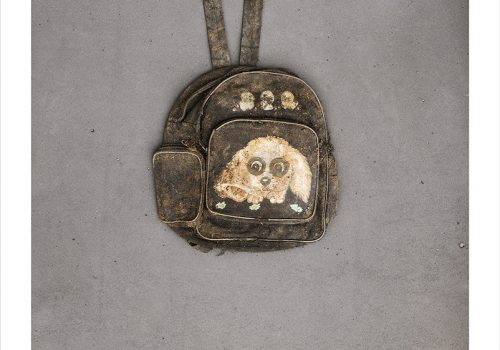The exhibtion, The Day I Became Another Genocide Victim, was scheduled to open on April 7, 2020 at The Holocaust and Genocide Centre in Johannesburg, South Africa, to commemorate the anniversary of the genocide in Rwanda. As a result of COVID-19 the exhibition has been cancelled. Now, more than ever, we need to remind one another of the threats to humanity, often inflicted by our own hand. The current global situation is one. The crime of genocide is another.
The Day I Became Another Genocide Victim is a series of posthumous portraits of victims of the genocide in Rwanda, as imagined through their recovered personal possessions, photographed at Kabuga Village, Rwanda in May and November 2018. I photographed these items, worn by genocide victims on the last day of their lives, as they were taken from the ground at newly discovered mass graves, almost 25 years after the genocide. In total, remains of over 84,000 people were recovered at the site.
There are 100 images in the series in acknowledgement of a survivor’s testimony. She shared her experience of pretending to be dead lying underneath a pile of bloodied dismembered bodies when she heard one of the perpetrators say, “I just need one more and I’ll have 100.” Further, it is a fitting tribute to the 100 days of the genocide in Rwanda, during which almost 1 million people were murdered, making it the fastest and most efficient killing spree of the twentieth century.
All, but the last image in the series, are individual pictures of what victims were wearing on the day they were murdered, with a text statement in the first person. The purpose of the text is to reflect the experience I had while making the images — the overwhelmingly emotional feeling that I was shooting portraits of people, and not still life pictures of objects.
The final image in the series is simply a grey background, without a person represented. The text reads, “We were.” That image symbolically represents the millions of genocide victims everywhere that have never been individually identified. An edit of 20 portraits is included in this portfolio (more availble upon request).
Each of these posthumous portraits forces us to imagine the life story of one dead person out of the one million victims of the genocide in Rwanda. They humanize people who would otherwise be forever dehumanized. We can never comprehend one million dead people. We can, however, readily imagine the life of that little boy, carrying his doggy backpack and each of the other people represented in this series of portraits. They were each clubbed to death, dismembered by machete-wielding perpetrators or otherwise murdered in an effort to eliminate the Tutsi people. We can know them. Each lived at the very center of their own life story until the day they were murdered.
While working at Kabuga Village in Rwanda, I thought a lot about the words of French philosopher and art historian, Georges Didi-Huberman, “Let us not invoke the unimaginable, but instead, force ourselves into that difficult place of imagining.”
Thank you for imagining with me.
Barry Salzman
Barry Salzman is an award-winning contemporary artist who currently works in photography, video and mixed media. His projects have been shown across the globe and his work widely published. He is the recipient of the 2018 International Photographer of the Year award in the Deeper Perspective category from the International Photography Awards (IPA) for The Day I Became Another Genocide Victim, a project that endeavours to humanise victims of the Rwandan genocide.
Salzman was born in Zimbabwe and grew up in South Africa, before emigrating to the United States. He began photographing as a teenager in South Africa to explore the racial inequality that surrounded him. For the last six years his art practice has attempted to challenge the universal fatigue around the genocide narrative, by supplementing the photojournalism/documentary genre with creative efforts to engage viewers in different ways. Mostly, he works with landscape in metaphoric ways and applies visual tools of abstraction to images shot at precise locations where acts of genocide were perpetrated as a means of reminding us that ‘that place’ can be ‘any place’.
Salzman has an MFA in Photography, Video and Related Media from The School of Visual Arts in New York City and currently resides between New York City and Cape Town, when not travelling for a project or assignment.
His other projects can be seen at www.barrysalzman.net.
















